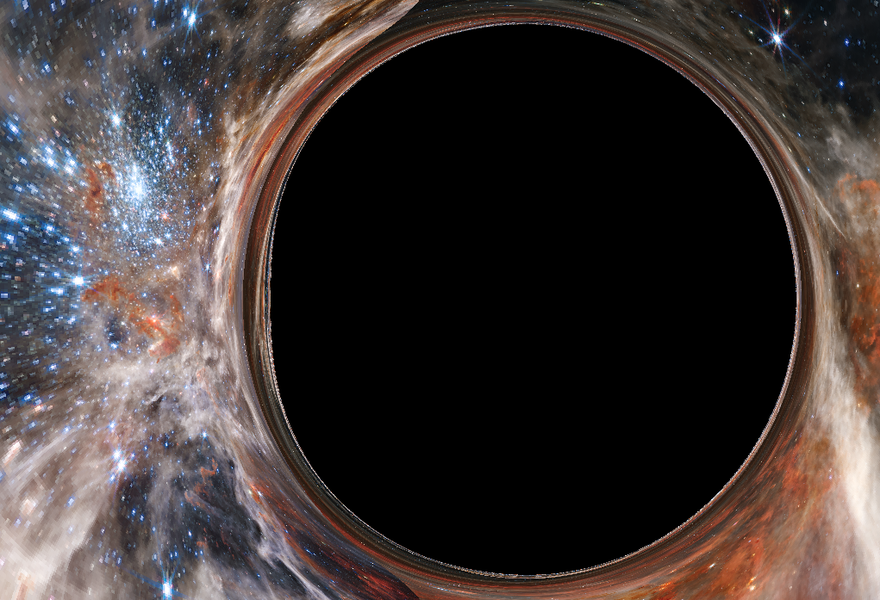New breakthrough reveals how galaxies shape their central rotating black holes

Black holes are often described as simple, isolated objects. In reality, most black holes live in busy cosmic neighborhoods, surrounded by gas, dust, accretion disks, and even dark matter. Yet, our mathematical models have either ignored these surroundings, treating black holes as if they existed in a perfect vacuum, or overlooked a key feature: that black holes spin.
Combining rotation with a realistic astrophysical environment makes the equations describing such black holes extraordinarily complex, so much so that no one had ever solved them. Until now. In this new study, researchers developed a full mathematical model of a spinning black hole embedded in its environment, revealing how nearby matter can subtly reshape the structure of a black hole. These results show that a black hole can spin faster than in vacuum, and that galaxies do affect black hole properties, a crucial effect if one wants to put General Relativity to the test.
This achievement, published in Physical Review Letters, offers the most realistic picture yet of what actual black holes look like and how they behave in the universe. It also paves the way for better interpretations of data and future observations, bringing us closer to understanding these enigmatic cosmic giants as they truly are.
Note: The figure above is an image of a supermassive highly spinning black hole on Tarantula Nebula
Nov. 18, 2025, 5:42 a.m.